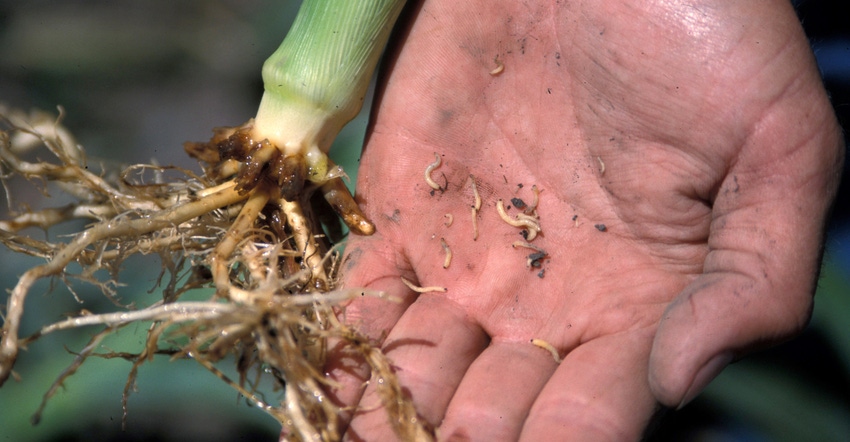December 27, 2022

We’re going with corn after corn on 800 acres because economics favor corn. How can we minimize yield drag? Which diseases or insects might be worse than in rotation?
The Indiana certified crop advisor panel answering this question includes Danny Greene, agronomist with Greene Crop Consulting Inc., Franklin, Ind.; Marty Park, sales agronomist with Gutwein Seed Services, Rensselaer, Ind.; Jesse Uebelhor, agronomist with Superior Ag, Jasper, Ind.; and Dan Quinn, Purdue Extension corn specialist.
Greene: A large portion of corn-on-corn success is about managing heavier residue loads. Add-on options at the head can mechanically break apart stalks. Spread residue evenly. An extra tillage pass may help size and incorporate residue. Set up your planter to handle more residue.
Because carbon in residue ties up nitrogen, corn after corn typically requires 25 to 40 more units of nitrogen. Applying it in 2-by-2 starter and the rest as sidedress puts N available when needed.
Breaking down residue should allow soils to warm more quickly and reduce inoculum of second-year corn diseases, including gray leaf spot, northern corn leaf blight, anthracnose leaf blight and tar spot. Plan a strong fungicide program, pick hybrids defensive against diseases or do both. Protecting seed with an insecticide seed treatment or soil-applied insecticide is encouraged for corn rootworm control.
Park: Start with timely, deep tillage. Get residue decomposing quickly. Identify hybrids that perform well in corn after corn. Look for strong emergence, sound agronomics and a strong disease package, especially for tar spot, northern corn leaf blight and gray leaf spot. Protect roots with built-in technology or insecticide at planting if you’re in a rootworm area.
Plant into the best possible field conditions with a favorable forecast. Normally, we bump seeding rates 1,000 to 1,500 seeds per acre. Use starter and have plenty of nitrogen available. Plan on fungicide at R2.
Uebelhor: If corn rootworm is a problem, look at traits and/or soil insecticides. Consider in-furrow insecticides that use bifenthrin at higher rates.
Manage corn residue to increase breakdown and minimize nutrient tie-up. Also, consider increasing total nitrogen needs 30 to 60 units to account for carbon tie-up. A 215-bushel crop can tie up up to 90 pounds of nitrogen to feed micros instead of feeding your crop.
Also consider using a fungicide in-furrow, 2-by-2 or at V5, depending on product and setup.
Quinn: Adjust total N rate to add another 30 to 50 pounds per acre. Even so, recognize most fields in continuous corn yield 7% to 10% lower than in rotation.
High levels of residue interfere with furrow opening and closing, and cause uneven germination, emergence and stand establishment. Also, high levels of residue can cause soils to dry and warm up more slowly and unevenly. Row cleaner adjustments, closing wheel adjustments and starter fertilizer in 2-by-2 with higher nutrient rates help.
Assess how the planter handles and moves residue from the seed furrow. Monitor consistency of seed depth and placement. Choose hybrids with strong vigor ratings and good stress tolerance. Increased levels of seedling blights may warrant proper seed treatment selection.
Select hybrids with strong disease ratings to foliar diseases and ear rots. Scout and monitor continuous corn more closely. Know what diseases are present, when, their severity and if a fungicide will be applied.
Wireworms, seed corn maggots, white grubs and slugs are more likely in continuous corn and heavy residue situations, increasing importance of seed treatments. Western corn rootworm and European corn borer become more problematic, especially with non-transgenic hybrids.
You May Also Like




